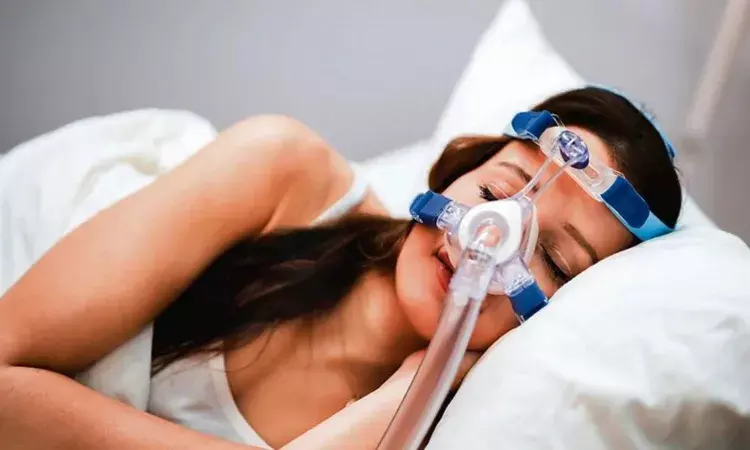- Home
- Medical news & Guidelines
- Anesthesiology
- Cardiology and CTVS
- Critical Care
- Dentistry
- Dermatology
- Diabetes and Endocrinology
- ENT
- Gastroenterology
- Medicine
- Nephrology
- Neurology
- Obstretics-Gynaecology
- Oncology
- Ophthalmology
- Orthopaedics
- Pediatrics-Neonatology
- Psychiatry
- Pulmonology
- Radiology
- Surgery
- Urology
- Laboratory Medicine
- Diet
- Nursing
- Paramedical
- Physiotherapy
- Health news
- Fact Check
- Bone Health Fact Check
- Brain Health Fact Check
- Cancer Related Fact Check
- Child Care Fact Check
- Dental and oral health fact check
- Diabetes and metabolic health fact check
- Diet and Nutrition Fact Check
- Eye and ENT Care Fact Check
- Fitness fact check
- Gut health fact check
- Heart health fact check
- Kidney health fact check
- Medical education fact check
- Men's health fact check
- Respiratory fact check
- Skin and hair care fact check
- Vaccine and Immunization fact check
- Women's health fact check
- AYUSH
- State News
- Andaman and Nicobar Islands
- Andhra Pradesh
- Arunachal Pradesh
- Assam
- Bihar
- Chandigarh
- Chattisgarh
- Dadra and Nagar Haveli
- Daman and Diu
- Delhi
- Goa
- Gujarat
- Haryana
- Himachal Pradesh
- Jammu & Kashmir
- Jharkhand
- Karnataka
- Kerala
- Ladakh
- Lakshadweep
- Madhya Pradesh
- Maharashtra
- Manipur
- Meghalaya
- Mizoram
- Nagaland
- Odisha
- Puducherry
- Punjab
- Rajasthan
- Sikkim
- Tamil Nadu
- Telangana
- Tripura
- Uttar Pradesh
- Uttrakhand
- West Bengal
- Medical Education
- Industry
Oximetry parameters in sleep apnea may be key prognostic indicators of central auditory dysfunction

Malaysia: Mean oxygen saturation (SpO2), per cent SPO2 < 90% and minimum SPO2 are critical prognostic indicators of central auditory dysfunction in patients with obstructive sleep apnea (OSA), a recent study in the European Archives of Oto-Rhino-Laryngology has shown.
Obstructive sleep apnea is one of the most common respiratory disorders characterized by intermittent obstruction of the upper airways during sleep, leading to apnea and hypopnea, and respiratory event-related arousal (R.E.R.A.). It has been linked with auditory dysfunction both in the cochlear and higher auditory pathways. However, available literature has yielded conflicting results.
Against the above background, Chee Chean Lim, University of Malaya, Kuala Lumpur, Malaysia, and colleagues aimed to investigate the impact of O.S.A. severity and their polysomnography parameters on hearing function.
After evaluation for sleep disorders, the researchers included a total of 44 patients who were categorized into four groups according to the apnea-hypopnea index (AHI). They made a comparison of distortion product otoacoustic emission (D.P.O.A.E.), pure tone audiometry (P.T.A.), and auditory brainstem response (A.B.R.) corresponding with AHI severity. Polysomnography oximetry parameters of oxygen desaturation index, per cent SPO2 < 90%, mean SPO2, and minimum SPO2 were correlated with their respective A.B.R., P.T.A., and D.P.O.A.E. results.
Polysomnography oximetry parameters of oxygen desaturation index, mean SPO2, minimum SPO2 and per cent SPO2 < 90% were correlated with their respective P.T.A., D.P.O.A.E. and A.B.R. results.
The authors reported the following findings:
- There was no significant change in the P.T.A., D.P.O.A.E. and A.B.R. results in connection with AHI severity.
- Significant correlations were found between mean SPO2 and per cent SPO2 < 90% with A.B.R. wave I, III and V absolute latencies.
- Minimum SPO2 was also significantly correlated with wave III peak latency changes.
"Our findings further expound the conflicting associations of auditory dysfunction in patients with obstructive sleep apnea," the researchers wrote in their study. "Oximetry parameters, namely, per cent SPO2 < 90%, mean SPO2, and minimum SPO2 could be critical prognostic indicators of central auditory dysfunction as revealed in the study."
"These parameters should be further explored to gauge the degree of the severity of O.S.A. rather than AHI utilization alone," they wrote. "The hypoxic burden derived could be a better predictor of auditory function abnormalities rather than one derived from AHI."
Reference:
Lim, C.C., Ahmad, T.E.B.T.N., Sawali, H.B. et al. Evaluation of auditory system in obstructive sleep apnea patients. Eur Arch Otorhinolaryngol (2022). https://doi.org/10.1007/s00405-022-07711-1
Dr Kamal Kant Kohli-MBBS, DTCD- a chest specialist with more than 30 years of practice and a flair for writing clinical articles, Dr Kamal Kant Kohli joined Medical Dialogues as a Chief Editor of Medical News. Besides writing articles, as an editor, he proofreads and verifies all the medical content published on Medical Dialogues including those coming from journals, studies,medical conferences,guidelines etc. Email: drkohli@medicaldialogues.in. Contact no. 011-43720751


